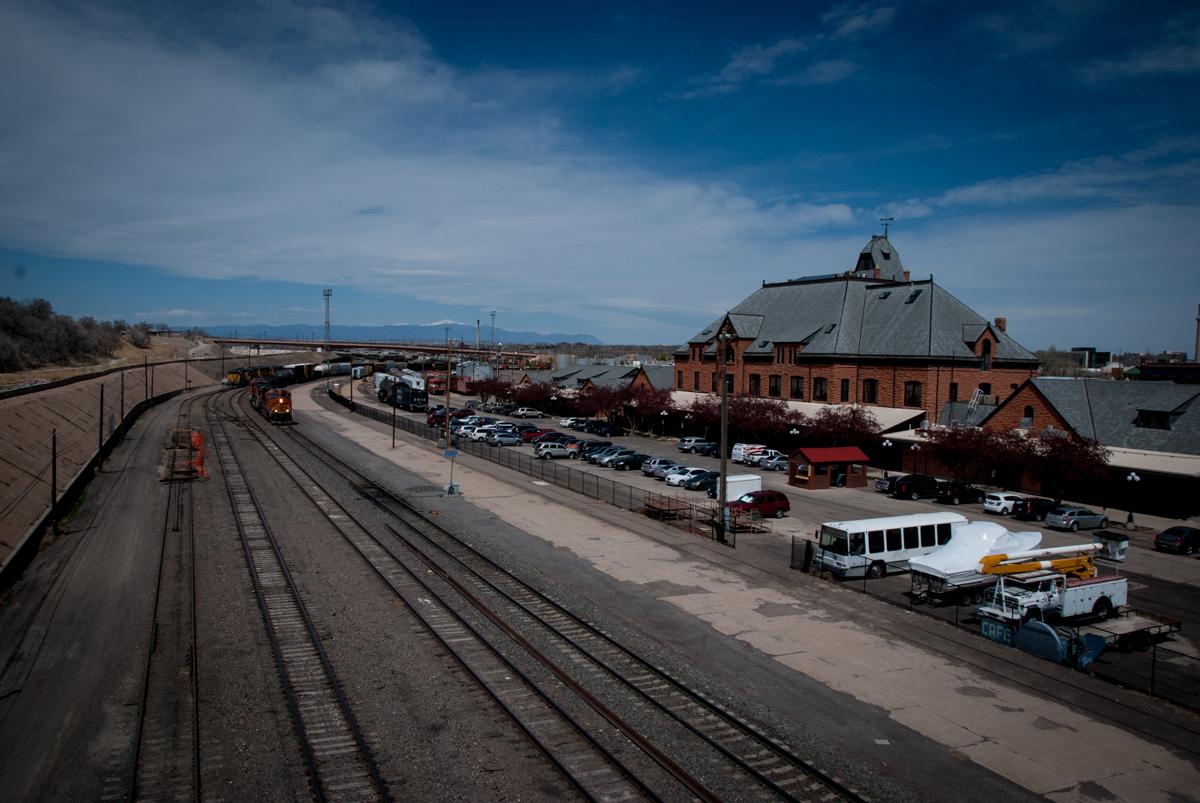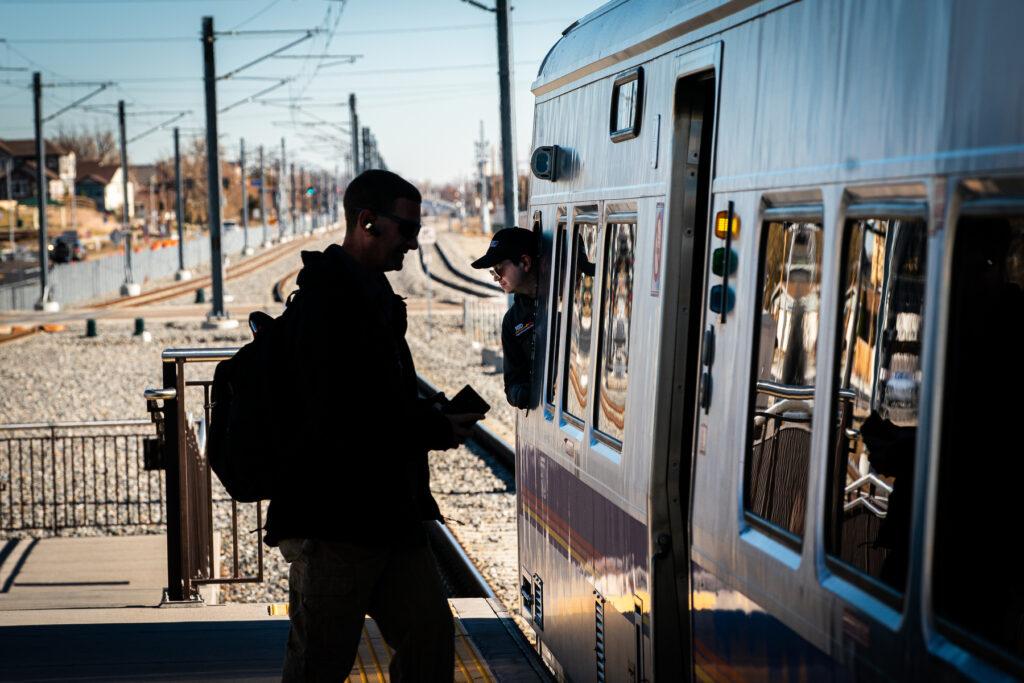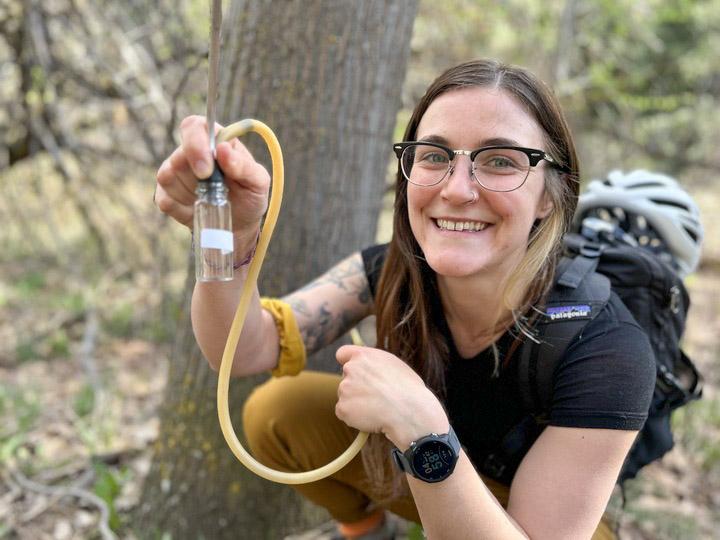
One day, the Front Range Passenger rail line could bridge the cultural and economic divide between northern and southern Colorado — creating a 190-mile route from Fort Collins in the north to Pueblo in the south, and perhaps even further.
But for the first six years, the new line may serve one region: the north.
The planned first phase of the project could run from Denver to Boulder, and on to Fort Collins, maybe by 2029. Meanwhile, some lawmakers hope to open another line out to Steamboat Springs in the northwest around the same time.
The rest of the service — into the more sparsely populated plains of southern Colorado — would have to wait until 2035. That’s led to growing concerns, for some, that southern Colorado will once again be the caboose.
“The money will be channeled to the benefit of the northern Front Range, and its proponents plan to be the first to the table for lucrative federal [matching grants]. From the perspective of the Pikes Peak region, we do not see this as a realistic or fair solution to our passenger rail challenges. Far from it,” said John Graham, mayor of Manitou Springs in southern Colorado, in a committee hearing on Wednesday.
The Polis administration said it’s committed to the entire north-south line and argues there’s a good reason to start with Boulder and the northern route.
The train to Boulder was promised 20 years ago when voters across the Denver metro approved new taxes to fund the Regional Transportation District’s FasTracks programs. Years of planning and analysis have gone into the route, which serves a densely populated corridor. And RTD already has about $170 million in the bank that is meant, in part, to fund such a project.

“These near-term steps would be crafted to support, and not negatively impact, the efforts already in motion for passenger rail service from Pueblo to Fort Collins; they would, if anything, accelerate the timeline for full service and help build ridership for a full service,” read a white paper backed by the Polis administration.
But selling that north-first schedule may be a tricky political balancing act. Eventually, the Front Range rail planners will have to convince voters along the corridor to support new tax funding for the multi-billion dollar project. And it could feed into historic concerns that southern Colorado is too often forgotten and overlooked by lawmakers in the Capitol.
“I think that people in southern Colorado have been left out for so long that they don't believe that anyone in Denver would do anything for southern Colorado,” said Leigh Elliott-Lopez, co-owner of Fishers Peak Outfitters in Trinidad.
Sal Pace, a former legislator, now a board member of the Front Range Passenger Rail district, has been advocating for rail in southern Colorado for some 15 years.
“I'll remind folks that the momentum for passenger rail in Colorado started in southern Colorado with the Southwest Chief coalition,” he said at a recent legislative committee hearing.
Still, he agrees with the idea of prioritizing the Boulder and Fort Collins segments of the line. He framed it as a political necessity. The overall Front Range project will require a new, voter-approved tax — and residents of the northern corridor aren’t going to vote for a new train plan unless it fulfills the original Boulder train promise, Pace argued.
Indeed, Democratic leadership in the statehouse effectively shut down a 2020 bill to launch the Front Range rail project because of the “unfulfilled promises,” Pace said. Instead, the bill passed the next year with explicit instructions to prioritize “construction and completion” of the northwest corridor to Boulder. Going north also could allow the project to tap into RTD funds that were set aside, in part, for the Boulder train.
“We recognize for political reasons that we have to go north first,” Pace said, adding: “It works out well that we’re using RTD’s $180 million … It allows for us to take care of the political problem.”
Some Front Range rail district board members are pushing for more detail and a clear plan to fulfill the southern end of the segment.
Northwest rail is “not the only big political problem,” said Deborah Mulvey, a Front Range commissioner and Castle Pines council member, at a recent meeting. “There's a very big district, and our project is and our mandate is for the whole thing.”
Democratic leaders also want to run a train from Denver through the mountains to Steamboat Springs and Craig, largely using existing freight railways, an idea that’s gained steam lately. But some in the south are worried that the emerging plan will leapfrog their own project, taking up planners’ attention and potentially millions of dollars of proposed new funding.
“I get that we're in the same boat, but we've just got to advocate harder because there's less of us down here,” said Carlos Lopez, husband of Elliott-Lopez, arguing that rail service would be an economic and community lifeline for the south.
Some of the early funding for the project will come from SB24-184, which, if passed, would generate an estimated $57 million a year from rental car fees. Senate President Steve Fenberg said that money is not earmarked for any particular project, though he hopes it goes to Front Range rail, mountain rail, and statewide bus service planning.
“Long story short, these projects aren’t really competing against each other and instead their timing will be based on the service development plan, agreements with the rail companies, and the success of the federal grants and loans that the state will apply for,” he responded in a text.
Pace said the key to winning over voters would be to show the South that the service is really happening and that it will be worth the wait. Meanwhile, some cities in the south are moving ahead with their own projects to support the rail project. A coalition of local governments is applying for millions of dollars in federal grants to plan future station areas, Pace said. In Pueblo, design is underway on a passenger rail station.
“We’re spending close to $800,000 on a design right now,” said Pueblo County Commissioner Daneya Esgar, another former legislator, who was also appointed by the governor to the Front Range board. Funding for the station design was approved in a 2016 vote as part of a larger funding package — proof, Esgar said, that there’s an appetite in southern Colorado.
“Pueblo voters have weighed in and said they want this,” she said.
The Front Range rail board is debating now whether to put a funding measure on the ballot as soon as this November and how high the proposed sales and use tax should be. The board has recently discussed tax amounts ranging up to 50 cents per $100 purchase and could ask voters to approve a tax up to 80 cents per $100. At a meeting on Friday, board member Luis Lopez II suggested “going big” to ensure the south gets decent service quickly.
“Move forward and get the train all the way from Fort Collins to Trinidad. That way it's done, and we don't have to worry about piecemealing it in 20 years from now,” he said. Current plans end at Pueblo, with service further south to Trinidad and New Mexico identified as a potential extension.
The governor’s office stressed that he would not support plans unless they “include the entire front range.”
In an email, spokesperson Shelby Wieman wrote: “Governor Polis is committed to working with local, state, and federal partners to secure Colorado’s fair share of historic federal funding to make passenger rail a reality for Colorado, and applauds the work of … the sponsors for their work on legislation to help make that happen.”
Any tax measure would be voted upon by the full district, which includes millions of voters. Early cost estimates have named potential costs from about $8 billion to more than $14 billion for a high-end version of the service, but planners are focused on a more bare-bones version that would rely more heavily on existing freight rail and could be built for an estimated $3.2 billion. The state hopes to secure some of that funding from federal grants.
Editor’s note: This article was updated April 1, 2024 to correct a figure related to RTD’s savings.







